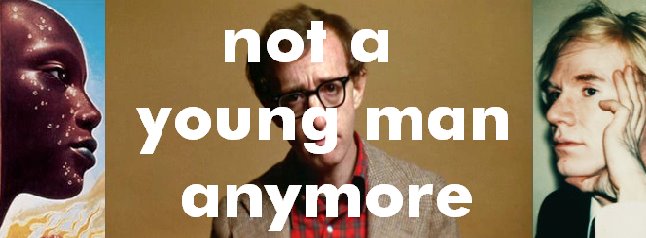 Early in Woody Allen’s latest film “Vicky Cristina Barcelona” a bohemian painter invites a young tourist back to his room to make love. She agrees on one condition – he has to seduce her. This exchange very well sums up my relationship with the film itself.
Early in Woody Allen’s latest film “Vicky Cristina Barcelona” a bohemian painter invites a young tourist back to his room to make love. She agrees on one condition – he has to seduce her. This exchange very well sums up my relationship with the film itself.Let me state up front that I am a HUGE Woody Allen fan. He ranks as one of my top three favorite directors (Kubrick and Scorsese complete the trio). I will defend many of his dismissed works like “Anything Else” and “Celebrity”, but I also acknowledge that he is capable of making sub-par films. “Hollywood Ending” and “Curse of the Jade Scorpion” I’m looking your way.
At the start of any new Woody Allen film I usually find myself buying into the negative hype. For much of the first act of “Vicky Cristina Barcelona” I was in hypercritical mode.
‘What’s with the “Jules et Jim” narration?’
‘That actor has no clue what they’re talking about.’
‘Are there really people like this anywhere in the universe?’
In spite of all of this, I found myself gradually falling under the film’s spell.
What really did it for me was Allen’s use of visuals. If you are a fan of the way he moves or doesn’t move his camera then this film will not disappoint. Javier Aguirresarobe’s photography is gorgeous and the wordless scenes of gallivanting around Spain are alive with an energy I cannot recall in any past Allen films. By the time Act 1 comes to an end with a series of dissolves and some beautifully employed slow motion, I was seduced.
The acting isn’t too bad either. Dialogue in a Woody Allen film can be tricky. Some people win Oscars® by reciting it correctly while others drown in a sea of references and rhythms they do not comprehend.
Penelope Cruz and Javier Bardem both give astounding performances, but for me the best is Rebecca Hall as the eponymous Vicky. Her performance is completely lacking in dramatic fireworks yet she is able to make you care for this conflicted woman. She is capable of doing so much with very little. Pauses, stutters and extra syllables make a world of difference. On the flipside we have Ms. Scarlett Johansson who doesn’t do much of anything with the part of Cristina. But that’s OK. Scarlett is important to the film in another way.
A lot of noise has been made in the press over the past few years about the collaboration between Allen and Johansson. Many pieces have made comparisons to Woody’s working relationship with Diane Keaton. In many ways I find this to be a bad comparison, but there is also one BIG way in which it is very apt.
Woody Allen’s films all take place in a chaotic/existentialist universe where luck and chance reign supreme. In “Match Point” it is pure luck that keeps Jonathan Rhys Meyers’ character from being caught. In the somewhat maligned “Melinda and Melinda” the inciting incident is the chance arrival of an unexpected dinner guest. Another aspect of this universe is how his characters tend to meet, grow together/take from each other and then go their separate ways. The best example of this is “Annie Hall”.
When she first meets Alvy, Annie is very inhibited and self-conscious. She does not feel secure with herself as a singer/photographer and sees Alvy as intellectually superior to her. As the film progresses this gradually changes. By the end of their relationship she has no problem expressing her thoughts and feelings. She is also able to embrace her own talent. The dissolution of their relationship is inevitable. Annie is a new person and no longer needs Alvy. (1)
Aside from “Manhattan Murder Mystery” in the early 90s, Woody and Keaton have not worked together in nearly three decades. Like Annie and Alvy they needed each other for a while but after a point they had to part ways. They no longer needed each other creatively. I feel this will soon become the case with Woody and Scarlett - if it has not happened already.
Though Scarlett already had a strong reputation in Hollywood prior to her work with Allen, it can be argued that appearing in “Match Point” sealed the deal. She is here to stay. Woody benefited in that her presence has inserted some very palpable sexuality into his work. Allen’s films have always dealt with sex but in a rather clinical way. With the rainy field scene in “Match Point” and all of the couplings in “Vicky Cristina…” things get downright steamy.
In “Vicky Cristina Barcelona” Johansson plays a girl trying to find herself in Spain. Through a relationship with two chaotic artists she is able to find her own voice. By the end of the film she realizes that she no longer needs the artists and leaves to strike out on her own. Perhaps this film is a sign that the Allen/Johansson collaboration has come to an end. It’s time go out on new adventures. Alone.
Though by no means a perfect film, "Vicky Cristina Barcelona" has something for everyone: beautiful visuals, fine acting and a fascinating exploration of co-dependent relationships. It is not to be missed.
(1) Schwartz, Richard A., Woody, From Antz to Zelig: A Reference Guide to the Woody Allen's Creative Work, 1964-1998. Greenwood Press. 2000.
Woody wrote a rather funny faux on-set diary. Check it out.
http://www.nytimes.com/2008/08/24/movies/24alle.html?_r=2&oref=slogin&oref=slogin





1 comment:
Beautifully written, my dear.
Post a Comment